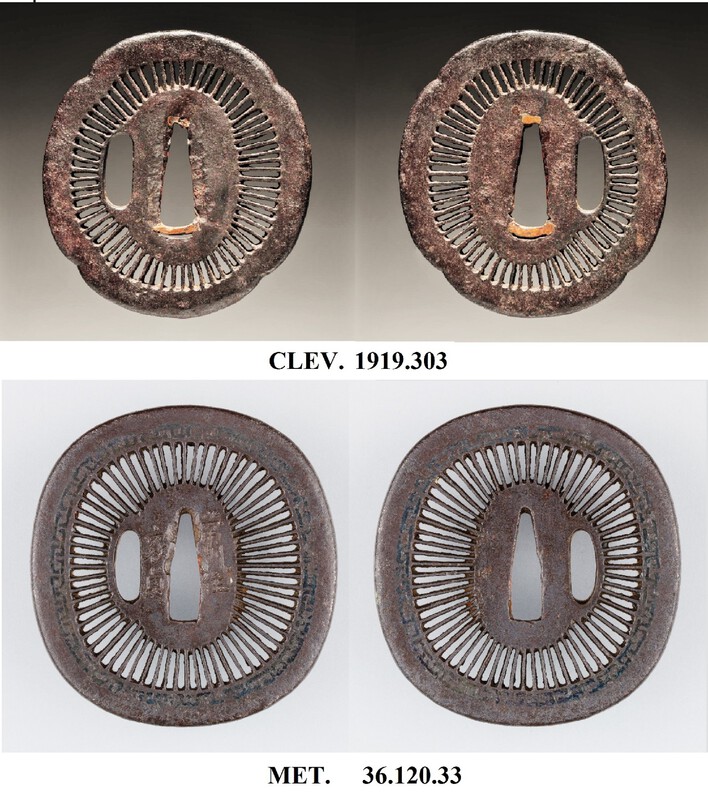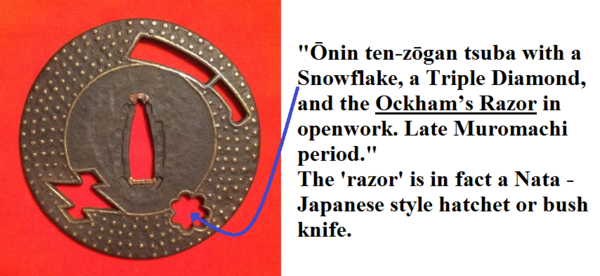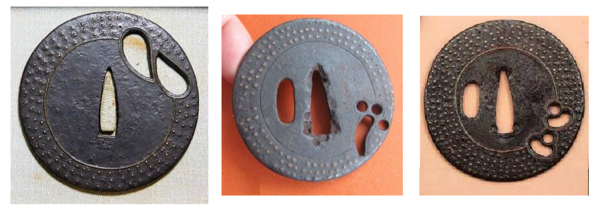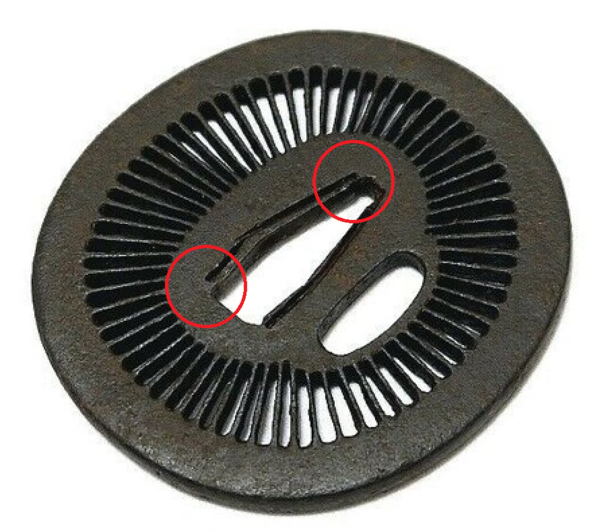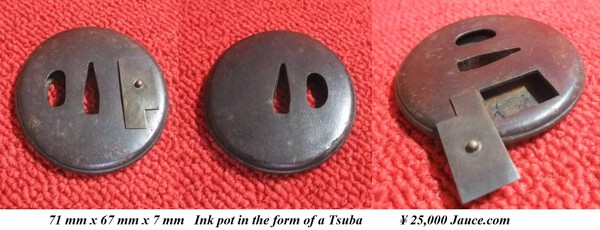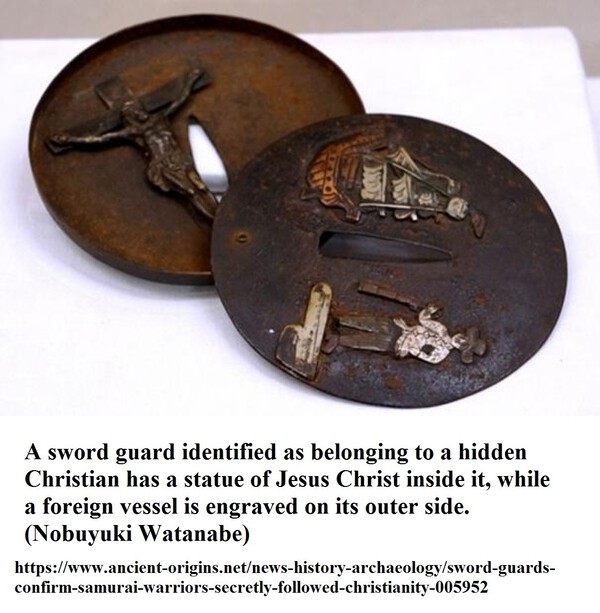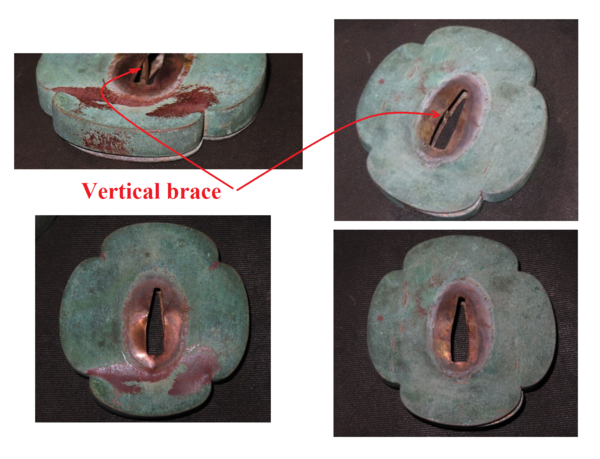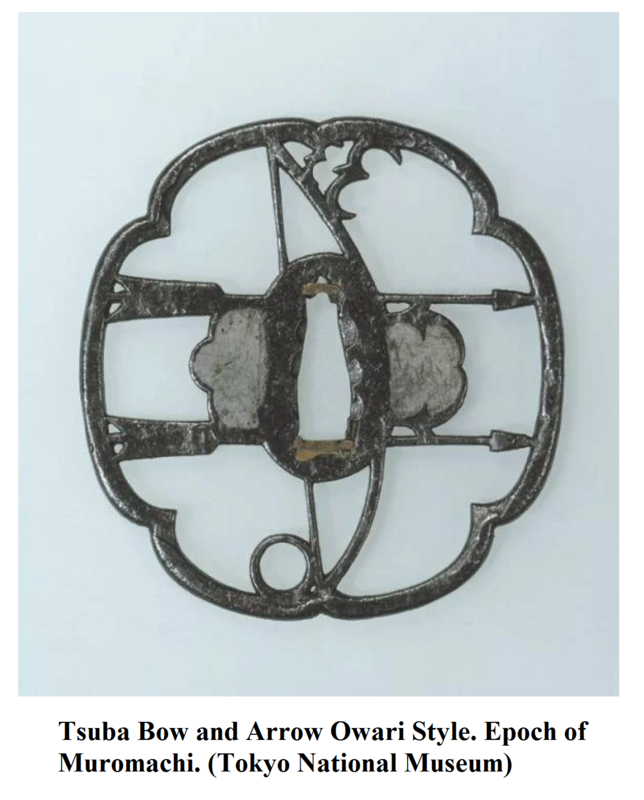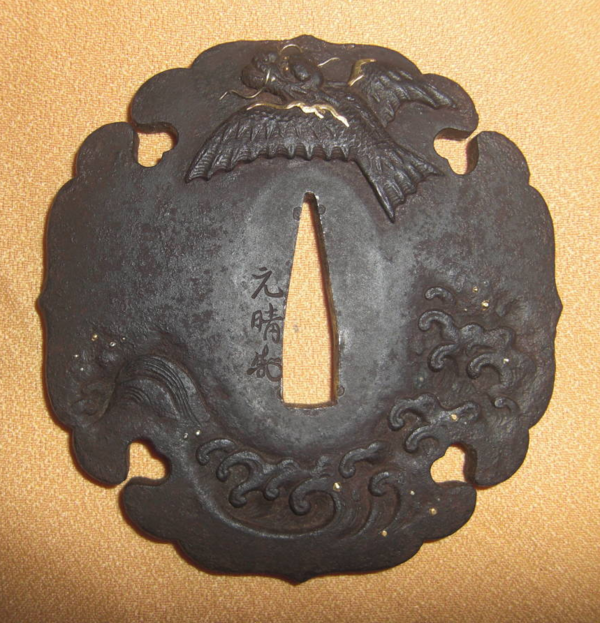-
Posts
3,699 -
Joined
-
Last visited
-
Days Won
100
Content Type
Profiles
Forums
Events
Store
Downloads
Gallery
Everything posted by Spartancrest
-
Roger for your records there are two very similar guards to yours - One in the Cleveland Museum of Art [1919.303], and another in the Metropolitan Museum of Art. [36.120.33]
-
Hi Jeremy, yes it was common to have Urushi lacquer on early sword guards and it does indeed tend to flake off and leave small patches behind. From my understanding the thinness of the plate is also early work, it tended to get thicker later - someone might correct me on this and I am sure there are exceptions to the 'rule' [there generally are.] There is an old thread here dealing with lacquer on iron tsuba.
-
Well like a lot of Japanese designs it is often in the eye of the beholder - but I might suggest the designs are a conventionalized cloud and a snowflake. The larger opening could also be a Tomoe [comma shape] but they are usually curved more. You should check this site out it has a lot of information on Onin tsuba and indeed many other styles of guard. https://varshavskycollection.com/onin-tsuba/ I was amused by one description [the first] on this site originally by Henri L. Joly In 1910. I don't believe Ockham's Razor was a subject for Japanese tsuba makers!
-
ONIN - Possibly going back to the Muromachi period in Japan. [1336 to 1573]. So it is possible to go back 200 years on your estimate. However many of these ancient designs were made right up to the end of the Edo period. The thinness of the plate is a good indication of age, under 3mm is average.
-
Hi Alex - you should get out more - mine is 112.5 mm x 111 mm - she is 'OLD' and been through a lot but I love her. I can't imagine just how big the sword would have been. Not as big as this one.
-
Roger. One went through the auction system tonight remarkably like your piece but smaller. [with some sekigane and heavy tagane-ato] https://www.jauce.com/auction/p1055486376 They all seem to share a thin elongated hitsu-ana.
-
Roger there is a lot of overlap in the designs - some are Saotome, others Heianjo and no doubt numerous Shoami versions. How you can tell the school other than if they have inlays eludes me - it might take in-hand experience to say for sure. I found these examples in a few minutes of searching - I can only go on the descriptions given with each image, but bear in mind the people posting them may not be entirely accurate. You are correct the 'front' face is called omote the rear ura.
-
Hi Roger, are you sure there is a shim? It looks to me [thanks to the new lenses in my eyes] that there are long chisel marks (tagane) to tighten the fit around the nakago of the sword. But to be honest I don't know why a shim wouldn't have been better? The guard looks good to me but you are probably correct that it has been re-patinated at some time [looks in great condition none the less.]
-
Another one, but it may be just an inkpot made to look like a tsuba rather than the other way around. By the way what is the European standing on? A pier or some school boy anatomy scribble?
-
Thanks guys. The only one like it I have seen before was hiding some Christian items inside it. For the Eagle eyed you might notice the 'nail' through Jesus's ankle acts as the pivot to open the lid - handy so the cross won't rattle and give itself away.
-
-
Thanks a lot Roger. As it happens I am about to release a new "old" book on the Tadamasa Hayashi collection from back in 1906 and I stumbled on one of his images of a "16th century cast bronze" guard only to turn around and find it's utsushi listed on eBay [I have grave doubts either are 16th century.]
-
One from the Tadamasa Hayashi collection. [image from 1906] Translated from the French description "Number 138. Iron guard chiseled and openwork. Aoi plant and rolled blind. By Bushû. Beginning of the 17th c." A very similar design to the one posted by Glen [GRC] on February 13, even down to the open book.
-
Mike, could these be linked to your kozuka mystery, you mentioned back in April?
-
Not number 345 in the book - close utsushi but tagane-ato wrong and nakago-ana longer. Collin's one is not signed so it is just an attribution. [guess]
-
The way the eyes line up - giving each other a good nasty stare? [Well Florian, if it comes to it - Who has seen a real Dragon?]
-

Yagu guard or just a guard from Yagu the village?
Spartancrest replied to Spartancrest's topic in Tosogu
I know, it is a long time between drinks - Found this one in the British Museum. No ura view. Total four and counting. -
Talking of Tsurumaki I have one with two bow strings in my box of tricks - and no bow!
-
For comparison there is this one - same theme just different layout. https://emuseum.cornell.edu/objects/9274/openwork-tsuba-with-design-of-a-bow-and-two-arrows
-
-
-
Unfortunately the Met is pretty poor on its information on about 80% of the guards - no more information is available, other than who gifted the guard to the museum. The measurements are pretty close! Do you have the weight of yours?
-
-
Grev, nothing exists in isolation! This is a stock photo - they want to charge money for something already in the public domain. This is a guard found in the Metropolitan Museum of Art no. 36.120.179 Diam. 3 1/4 in. (8.3 cm); thickness 3/16 in. (0.5 cm); Wt. 3.7 oz. (104.9 g)
-
Alex. Every collector will have a different reason to be drawn to tsuba and other Nihonto. For me I think it is the wonder that we can hold such history in our hands at all. Every piece has a story to tell - it may not always be glorious, some are downright dishonest others are beyond the imagination of mortals. I like Alban's theme method of collecting, in a way that was how I started - I was 'drawn' to ten-zogan [dot inlay] but I seem to have strayed far and wide into different areas as time went on. Currently more into Kawari-gata -[odd shapes] the odder the better! You will have lots of fun finding what works for you.


